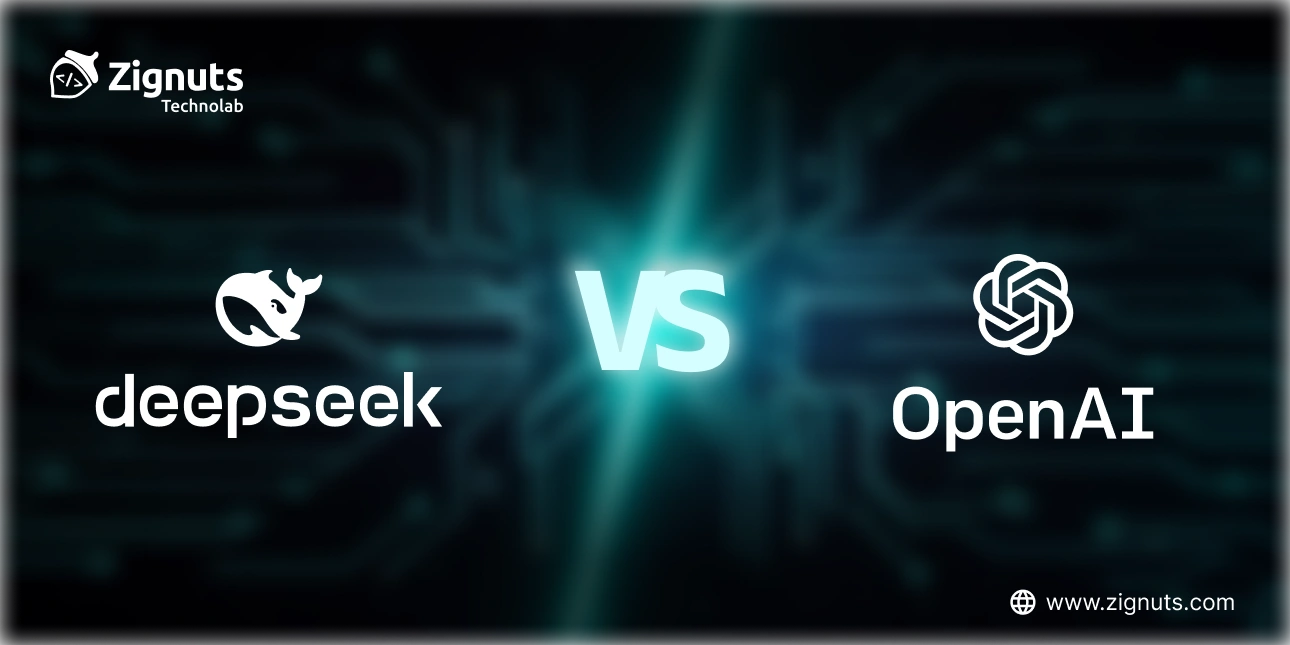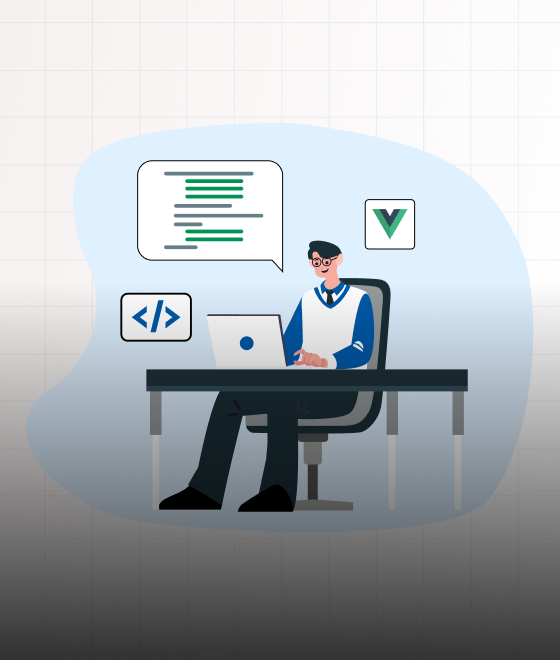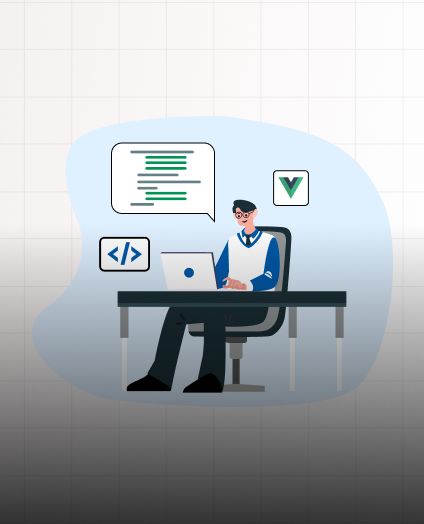DeepSeek R1 vs OpenAI O1: Introduction
Artificial Intelligence (AI) has rapidly evolved, shaping industries and revolutionising the way we interact with technology. Among the leading contenders in this AI race are DeepSeek R1 and OpenAI o1, two cutting-edge models that excel in problem-solving, reasoning, and automation. While both models push the boundaries of innovation, they each offer unique strengths that serve various applications. In this blog, we will explore what sets DeepSeek R1 and OpenAI o1 apart, highlighting their capabilities and impact on the future of artificial intelligence.
DeepSeek R1: Advanced Reasoning AI Model
DeepSeek R1 is a reasoning-focused large language model (LLM) developed to enhance logical and problem-solving capabilities in Generative AI systems. Designed for complex reasoning tasks such as mathematics, programming, logical inference, and problem-solving, it leverages advanced reinforcement learning (RL) techniques to achieve state-of-the-art performance across various benchmarks.
DeepSeek R1 Model Architecture & Training
DeepSeek R1 is a transformer-based model optimised for logical reasoning, mathematical computation, and scientific analysis. It leverages self-attention mechanisms to process complex inputs like scientific literature, code, and problem statements. The model supports multi-task learning, excelling across diverse domains without compromising performance.
Foundation & Evolution
- DeepSeek R1 is built on its predecessor, DeepSeek R1-Zero, which was based on the v3 model (671B/37B Activated)
- R1-Zero underwent large-scale reinforcement learning (RL) using the Group Relative Policy Optimization (GRPO) algorithm
- The focus was on accuracy and structured reasoning, but it lacked readability and language consistency (mixing of languages)
Fine-Tuning Process
- To address the above issues, DeepSeek R1 was fine-tuned using a small dataset (~k samples) of:
- Long Chain-of-Thought (CoT) examples curated for human readability
- Summaries to enhance clarity
- Further reinforcement learning (RL) was applied with a reward function to penalize language mixing and ensure language consistency
- Once the model converged:
- 800k supervised fine-tuning (SFT) data was collected:
- 600k reasoning examples
- 200k non-reasoning examples
- A final RL stage aligned the model with human preferences, improving its ability to perform general tasks like writing, storytelling, and role-playing
- 800k supervised fine-tuning (SFT) data was collected:
The training process combines supervised and unsupervised learning on a curated dataset, including scientific papers, coding repositories, and problem-solving exercises, alongside reinforcement learning from human feedback (RLHF). Optimized for scalability and efficiency, DeepSeek R1 is designed for real-time applications, with continuous learning capabilities to stay updated with new data and advancements. By building on the strengths of DeepSeek R1-Zero and addressing its limitations, DeepSeek R1 represents a significant leap forward in specialized AI capabilities, making it a powerful tool for researchers, developers, and problem-solvers tackling complex challenges.
Running DeepSeek R1 Locally with Ollama
Ollama simplifies running LLMs locally by handling model downloads, quantization, and execution seamlessly.
Step 1: Install Ollama
- Visit the official Ollama website and download the installer for your operating system.
- Install Ollama by following the on-screen instructions, just as you would with any other application.
- Once the installation is complete, open a terminal to verify that Ollama is installed correctly.
Step 2: Download and Run DeepSeek R1 in Terminal
After installing Ollama, you need to download and run the DeepSeek R1 model. Open a terminal and execute the following command:
This command will automatically download the DeepSeek R1 model if it is not already available on your system. Once downloaded, you can start a conversation with DeepSeek R1 by simply typing your queries in the terminal.
Step 3: Accessing DeepSeek R1 via Python

If you prefer to interact with DeepSeek R1 programmatically, you can use Python with Ollama’s API.
Install the Ollama Python Package
Before running your Python script, install the required package:
Running a Python Script
Once Ollama is installed, use the following script to interact with the model:
After running the script, you will see the response of the query.

OpenAI O1: Next-Generation AI Model
OpenAI O1 is a next-generation AI model developed by OpenAI, designed to enhance natural language understanding, reasoning, and generation capabilities. It is built on a transformer-based architecture and optimized for efficiency, scalability, and adaptability across various applications. Leveraging advanced training techniques, including supervised learning and reinforcement learning from human feedback (RLHF), OpenAI O1 aims to provide more accurate, context-aware, and human-aligned responses.
OpenAI O1 Model Architecture & Training
OpenAI O1 is built on a transformer-based architecture, leveraging self-attention mechanisms to process and generate human-like text with enhanced coherence and contextual awareness. It is optimized for efficient token processing, allowing for faster and more accurate responses. The model also features adaptive scaling, adjusting computational efficiency based on task complexity. Additionally, O1 is designed to support multimodal capabilities, making it suitable for applications such as conversational AI, content generation, and code assistance.
Training Process and Model Optimization
- Massive Data Pretraining for Foundational Learning
- The training process begins with an extensive pretraining phase, where OpenAI O1 learns from diverse data sources, including books, research paper and web content
- This phase helps O1 develop a deep understanding of language, reasoning abilities, and domain expertise in various fields.
- Supervised Fine-Tuning (SFT) for Improved Performance
- After pretraining, OpenAI O1 undergoes supervised fine-tuning, where human experts provide labeled responses to refine the model’s outputs.
- This stage enhances the model’s ability to:
- Generate clearer and more accurate responses.
- Improve contextual relevance and logical consistency.
- Align with ethical guidelines and responsible AI principles to ensure bias mitigation and fairness in its responses.
- Reinforcement Learning from Human Feedback (RLHF) for Alignment
- To further refine performance, OpenAI O1 undergoes Reinforcement Learning from Human Feedback (RLHF).
- This process involves:
- Ranking multiple model-generated responses based on their helpfulness, accuracy, and neutrality.
- Prioritizing unbiased and high-quality outputs to improve reliability.
- Iteratively adjusting the model to align better with human expectations, preferences, and ethical values.
- RLHF plays a crucial role in reducing inaccuracies and mitigating biases, ensuring the model delivers trustworthy and informative responses.
DeepSeek R1 vs OpenAI O1: Performance Comparison
DeepSeek R1 vs OpenAI O1 Benchmark Performance
Both models have demonstrated strong capabilities across various benchmarks:
- Mathematics (AIME 2024): DeepSeek-R1 achieved a Pass@1 score of 79.8%, slightly surpassing OpenAI o1's 79.2%.
- Coding (Codeforces): OpenAI o1 holds a slight edge with a 96.6% percentile ranking, compared to DeepSeek-R1's 96.3%.
- General Knowledge (MMLU): OpenAI o1 scored 91.8%, marginally higher than DeepSeek-R1's 90.8%.
These results indicate that while both models are proficient, DeepSeek-R1 excels in mathematical reasoning, whereas OpenAI o1 has a slight advantage in coding and general knowledge tasks.
DeepSeek R1 vs OpenAI O1 Pricing & Cost
- DeepSeek API : $0.55 per million input tokens and $2.19 per million output tokens.
- OpenAI o1 API: $15 per million input tokens and $60 per million output tokens.
This significant cost difference makes DeepSeek-R1 an attractive option for budget-conscious developers and enterprises.
DeepSeek R1 vs OpenAI O1 API & Integration
- OpenAI o1 is backed by a well-established API with broad support in existing tools (e.g., LangChain, VectorDBs, and enterprise integrations).
- DeepSeek-R1, though open-source, may have less widespread integration but offers full flexibility for self-hosted deployments.
DeepSeek R1 vs OpenAI O1: Use Cases & Suitability
- DeepSeek-R1: Ideal for applications requiring advanced mathematical reasoning, cost-effective deployment, and customization due to its open-source nature.
- OpenAI o1: Suitable for tasks involving coding challenges, general knowledge queries, and scenarios where proprietary support and integration are beneficial.
Transparency and Customization:
- DeepSeek-R1's open-source nature allows developers to access, modify, and customize the model to fit specific needs. This transparency fosters innovation and adaptability across various applications.
- OpenAI o1 is proprietary, limiting direct customization and requiring users to operate within predefined parameters.
Conclusion: Which Model Should You Choose?
In conclusion, both DeepSeek R1 and OpenAI o1 bring strong AI capabilities, but their effectiveness depends on the intended use case. DeepSeek R1 is particularly well-suited for tasks that require deep technical and scientific reasoning, making it a strong choice for research-oriented applications. On the other hand, OpenAI o1 stands out for its versatility and speed, making it a more practical solution for general AI tasks, content generation, and interactive applications. Ultimately, the decision between the two should be based on the specific needs of the user, considering factors like performance, accessibility, and cost-effectiveness.




.svg)

.svg)



.svg)

.svg)


.webp)





.png)
.png)
.png)
.png)
.png)
.png)






